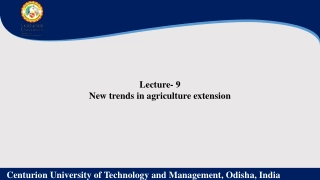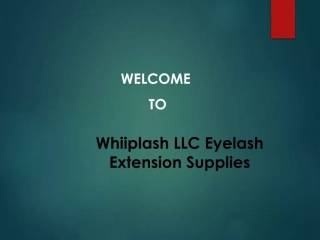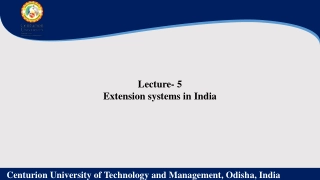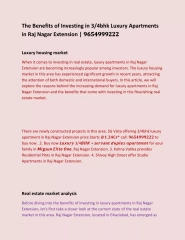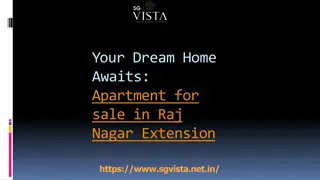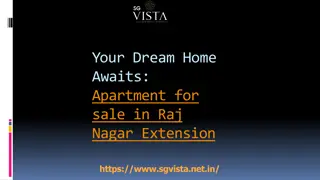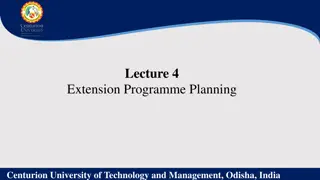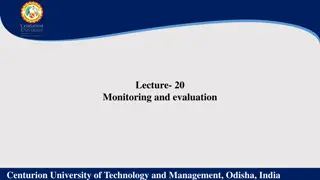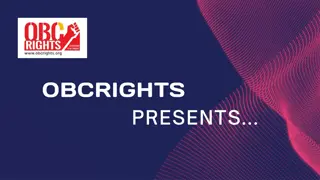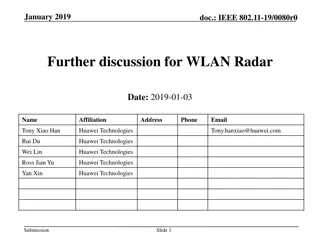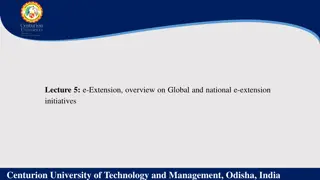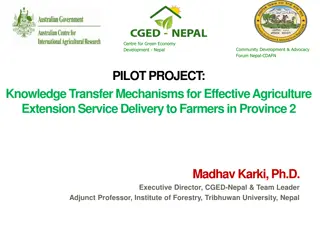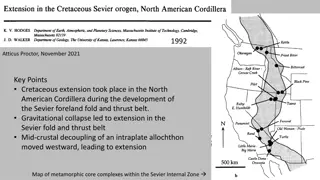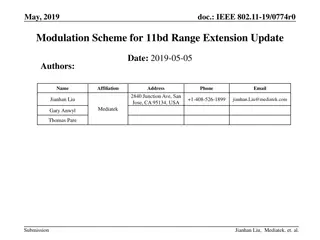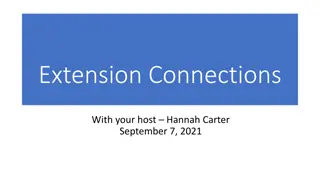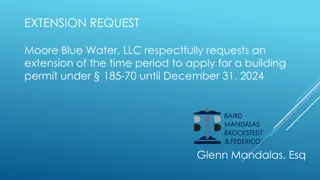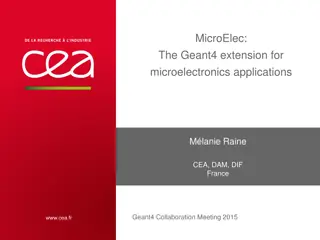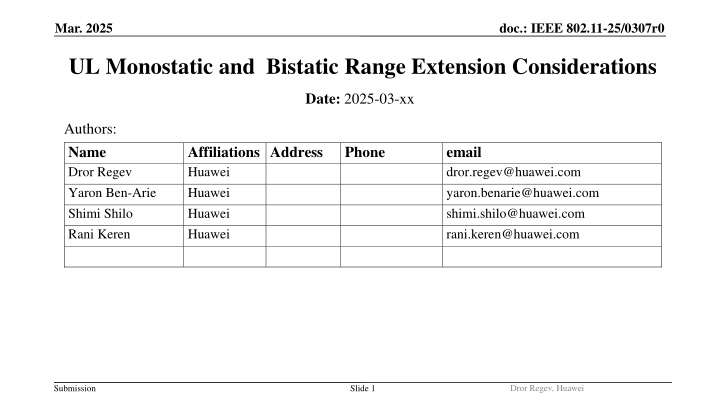
Enhancements for Extending Uplink Range in IEEE 802.11-25/0307r0 Document
Explore considerations for extending uplink range in AMP backscattering operations in both mono-static and bi-static modes. Discuss the impact of self-leakage, BS loss, and amplification on UL range extension, addressing challenges and potential solutions for achieving longer ranges.
Download Presentation

Please find below an Image/Link to download the presentation.
The content on the website is provided AS IS for your information and personal use only. It may not be sold, licensed, or shared on other websites without obtaining consent from the author. If you encounter any issues during the download, it is possible that the publisher has removed the file from their server.
You are allowed to download the files provided on this website for personal or commercial use, subject to the condition that they are used lawfully. All files are the property of their respective owners.
The content on the website is provided AS IS for your information and personal use only. It may not be sold, licensed, or shared on other websites without obtaining consent from the author.
E N D
Presentation Transcript
Mar. 2025 doc.: IEEE 802.11-25/0307r0 UL Monostatic and Bistatic Range Extension Considerations Date: 2025-03-xx Authors: Name Dror Regev Yaron Ben-Arie Shimi Shilo Rani Keren Affiliations Address Huawei Huawei Huawei Huawei Phone email dror.regev@huawei.com yaron.benarie@huawei.com shimi.shilo@huawei.com rani.keren@huawei.com Dror Regev, Huawei Submission Slide 1
Mar. 2025 doc.: IEEE 802.11-25/0307r0 Abstract The uplink (UL) range for AMP backscattering (BS) in mono-static operation is constrained by constant TX-RX AP (reader) self-leakage. This self-leakage does not limit the maximum excitation the reader can provide for energy harvesting (EH), but it does dictate lower excitation power levels for BS and imposes dynamic range constraints on the reader. These constraints set a practical upper limit for the UL range in standard mono-static mode. However, amplifying the backscattered signal can extend the UL range, provided that the available power for EH is sufficient for the specific use case. In bi-static operation, the direct carrier leakage is typically lower than the self-leakage in mono-static operation, which allows for higher excitation power for BS. As a result, bi- static operation enables longer UL ranges compared to mono-static mode. Longer UL ranges require longer EH ranges, which introduces a charging challenge, especially when BS amplification is applied to the tag. This discussion looks at potential AMP tag enhancements for achieving range extension in both mono-static and bi-static operation modes. Submission Slide 2 Dror Regev, Huawei
Mar. 2025 doc.: IEEE 802.11-25/0307r0 Background: 2.4 GHz Mono-Static Backscattering [1], [3] Example : AP DR= 50 dB, AMP tag BS Loss 5 dB, Antenna gains = 0 dB, SNRmin= 3dB, BS excitation waveform power PEX_B = 0 dBm, Charging power (2.4GHz) P EX_C = 10 dBm D [cm] Leakage signal: 0dBr PLk PEX_B = 0 dBm WiFi AMP reader AMP tag AP Dynamic Range Self Leakage 20dB BS Loss BS signal PRX SNR PLk -20 dBm Rx noise floor: e.g. -50dBr D [cm] PEX_B [dBm] PBS [dBm] 10 0 20 0 40 0 PRX [dBm] -45 -57 -69 PLk [dBm] -20 -20 -20 PLk -PRX [dB] 25 37 49 SNR[dB] 25 13 1 PEX_C [dBm] 10 10 10 PEH [dBm] -10 -16 -22 -25 -31 -37 40 cm range is limited by the BS loss Submission Slide 3 Dror Regev, Huawei
Mar. 2025 doc.: IEEE 802.11-25/0307r0 2.4 GHz Mono-Static Backscattering Range Extension Leakage signal: 0dBr Implement BS amplification [3] to improve SNR D [cm] PEX_B [dBm] BSLoss [dB] PRX [dBm] PLk [dBm] PLk -PRX [dB] SNR[dB] PEH [dBm] 40 0 5 -69 40 0 3 -67 -20 -20 49 47 1 3 -22 -22 PLk -PRX AP Dynamic Range 40 cm range is enabled by reducing the BSLoss to 3 dB BS signal Can we follow a similar approach to achieve an 80 cm range? SNR D [cm] PEX_B [dBm] BSLoss [dB] PRX [dBm] PLk [dBm] PLk -PRX [dB] SNR[dB] PEH [dBm] 80 0 5 -81 80 0 -9 -67 80 0 -10 -66 80 cm range is enabled in theory by a total BS gain of > -5+14 = 9 dB Rx noise floor: e.g. -50dBr -20 -20 -20 61 47 46 -11 3 4 -28 -28 -28 Submission Slide 4 Dror Regev, Huawei
Mar. 2025 doc.: IEEE 802.11-25/0307r0 Revisit - 2.4 GHz Bistatic Uplink [3] Link Assumptions PEX_B = PEX_C 20 dBm Backscattering Loss 5 dB Reader Effective DR 50 dB Reader min SNR 3 dB Antenna Gains 0 dB FRIIS & SNR [dB] DA, DB, DLk [m] 0.7, 0.7, 1 1, 1, 1.4 1, 5, 5 1.4, 1.4, 2 2, 2, 3.1 PBS [dBm] -22 -25 -25 -28 -31 PRX [dBm] -59 -65 -79 -71 -77 PLk [dBm] -20 -23 -34 -26 -30 PLk -PRX [dB] 39 42 45 45 47 SNR[dB] 11 8 5 5 3 PEH [dBm] -17 -20 -20 -23 -26 We can improve SNR and extend UL range, utilizing backscattering gain. Submission Slide 5 Dror Regev, Huawei
Mar. 2025 doc.: IEEE 802.11-25/0307r0 Extended Range 2.4 GHz Bistatic Uplink [2] Link Assumptions PEX_B = PEX_C 20 dBm Reader Effective DR 50 dB Reader min SNR 3 dB Antennas Gain 0 dB FRIIS & SNR [dB] for backscattering gain of 1 dB (e.g. 5 dB loss + 6 dB gain): DA, DB, DLk [m] PBS [dBm] PRX [dBm] 2, 2, 3.1 -25 -71 4, 4, 6.2 -31 -83 Hence, we can improve SNR and range, utilizing backscattering gain, PLk [dBm] -30 -36 PLk -PRX [dB] 41 47 SNR[dB] 9 3 PEH [dBm] -26 -32 FRIIS & SNR [dB] for backscattering gain of 7 dB (e.g. 5 dB loss + 12 dB gain): DA, DB, DLk [m] PBS [dBm] PRX [dBm] 4, 4, 6.2 -25 -77 8, 8, 12.4 -31 -89 8 meter range is achievable by implementing a total BS gain of > 7 dB, yet PEH maybe too low. PLk [dBm] -36 -42 PLk -PRX [dB] 41 47 SNR[dB] 9 3 PEH [dBm] -32 @ 2.4GHz -38 @ 2.4GHz Submission Slide 6 Dror Regev, Huawei
Mar. 2025 doc.: IEEE 802.11-25/0307r0 Extending the UL Range in 2.4 GHz Bistatic Uplink Direct leakage path derivation: ???2= ??2+ ??2 2???? cos ,? ??? ? ?? ? ? ?? ????? AP PBS1 Bi-Static Direct Lk PLk PRX1 PLk DB1 BSLoss 1 T1 PRX2 1 Direct leakage path loss ~ 1/???2 ?????? ??2 ??2 DLk DA1 RX path loss: ??????~ DB2 ,? ??? ?????? ?? ? ? ?? ???? ????????? e RX signal PRX PT Direct leakage to RX signal ratio: ??? ??? Carrier Source 2 PBS2 BSLoss 2 ??2 ??2 1 DA2 = ??2+ ??2 2???? cos T2 Rx noise floor ?????? While DA, DBand ? are dictated by the deployment scenario. Increasing the BS loss magnitude ??????reduces the ratio between the direct leakage and the RX signal. Submission Slide 7 Dror Regev, Huawei
Mar. 2025 doc.: IEEE 802.11-25/0307r0 Extended Backscattering Range Discussion: Mono-static UL range, assuming an effectively constant TX-RX self leakage, is inversely proportional to ?? ??= D4 and directly to the backscattering loss magnitude ??????. UL range may be extended by introducing backscattering gain ( |??????| > 1) [4]. The excitation carrier source power PEX_B is constrained by linearity of the reader receiver and is practically limited to ~ 0 dBm. Bi-static UL range is inversely proportional to the product of the squared distances ??? ???and directly to the squared direct leakage path ???? (DA, DBandDLk depend on the deployment) and the backscattering loss magnitude ??????. UL range may be extended here as well by introducing backscattering gain [4]. Since the envisioned use cases require longer ranges than in mono-static, the UL range may be limited by the power available for EH when the energizer is at a distance DA from the AMP tag. However, the direct leakage between the energizer/carrier source to the AP, is practically at least 20 dB lower than that of the mono-static scenario, enabling higher carrier source excitation waveform power levels (PEX_B ~20 dBm) and contribute as well to extended UL ranges as compared with Mono-static. Bi-static UL range however, is more limited by EH range as compared with Mono-static. EH range can not be improved by implementing BS gain. EH range can be improved by ~ 20 dB, if energizing is performed @ S1G WPT. PEX_C can be 30 dBm or more vs. 20 dBm at 2.4 GHz and the path loss is 8.5 dB lower at S1G. Slide 8 Slide 8 Submission Dror Regev, Huawei
Mar. 2025 doc.: IEEE 802.11-25/0307r0 Revisit Standard AMP BS Tag and Proposed Enhancement We have focused on low power/short range passive backscattering AMP tags so far. It may be beneficial to consider an enhanced extended range semi-active AMP tag with EH at S1G BS tags operating in a bi-static mode that use a BS amplifier, will require more power and higher PEH, especially when located further from the energizer. This requirement can be met when charging at S1G. Mono-static tags can also speed up charging times at S1G AMP Tag Type Range Consumption / Capacitor Bi-Static UL power Power Storage Antenna Frequency Harvesting Backscattering Passive / Switching only Semi-Active / Switch & Amplify Standard ~ 2 M < 10 uW C pF 2.4 GHz 2.4 GHz Enhanced ~ 10 M < 50-100 uW [4] 5-10 C pF S1G & 2.4 GHz S1G (*) * S1G is preferred for extended range/shorter duration EH. Harvesting at 2.4 GHz, maybe used for backup Submission Slide 9 Dror Regev, Huawei
Mar. 2025 doc.: IEEE 802.11-25/0307r0 Further Energizing and Backscattering Considerations [2] Read control Exchange Backscattering data read AMP DL PPDU AMP DL PPDU AMP Reader WPT for charging WPT for charging Excitation signal for backscattering Proposed S1G WPT AMP Energizer Backscatter Response Backscatter backscattering AMP Tag 2.4 GHz S1G S1G Wakeup portion (and subsequent recharges) can be performed at S1G, as this increases PEHby ~20 dB, enabling extended range energizing . Read control exchange, and backscatter data read at 2.4 GHz Submission Slide 10 Slide 10 Dror Regev, Huawei
Mar. 2025 doc.: IEEE 802.11-25/0307r0 Summary BS gain can be utilized to extend both mono-static and bi-static UL range. The BS range which is limited by the self or direct carrier leakages given the available AP DR performance, benefits an improved SNR when the BS signals are amplified as compared with the leakages. Mono-static UL range of about 80 cm may be achieved with reasonable PEH power levels and bi-static UL range of 8 meter may be achieved with WPT @ S1G as with active tags Such semi-active/enhanced BS tags may extend the range of BS tags Submission Slide 11 Slide 11 Dror Regev, Huawei
Mar. 2025 doc.: IEEE 802.11-25/0307r0 References 1. 11-24-0798r0 Close-range AMP WiFi Reader Feasibility Study Follow up ; Rui Cao (NXP) 2. 11-24-1798r0 Backscattering UL data rate and modulation ; Rui Cao (NXP) 3. 11-25-0030r0 AMP UL Bi-Static Leakage and Dynamic-Range Implications ; Dror Regev (Huawei) 4. 11-22/1893r0 Ambient Power Enabled IoT Technologies Hao Min (Shanghai Quanray Electronics) Submission Slide 12 Slide 12 Dror Regev, Huawei

